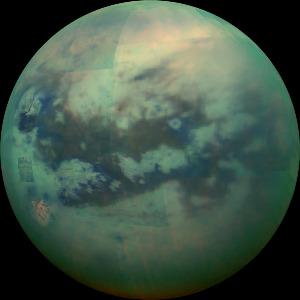
Titan is Saturn’s moon, the second largest after Jupiter’s moon(Ganymede). The only moon in the solar system resembles Earth with clouds, and a dense planet-like atmosphere. Although these look familiar but are filled with liquid methane streams streak, titan icy surface, and Nitrogen winds build hydrocarbon sand dunes. These materials are vastly different from the materials formed in our solar system. in our solar system, the mechanical properties of substances are based on silicate-based substances. And this makes the titan surface difficult to interpret.
Geologist Mathieu Lapotre, Stanford University, and his colleagues have identified a process that would follow how the hydrocarbon-based substances formed sand rocks and bedrocks and how often wind flows and stream flows on Titan. Lapotre said,” Our Model adds a unifying framework that allows us to understand how these sedimentary environments work together”. Titan is the next target for space exploration because of its potential habitability with Earth-like a liquid transport life cycle. If we focus, on the different pieces of puzzles that fit together and their mechanisms, then we come to know something about the climate and geographical history of Titan. In order to create a model that simulates the formation of the distinct titan landscape, Lapotre and his team first found the mysterious fact that how organic compounds found on Titan, which are more fragile than inorganic silicate grains, transform into distinct structures rather than be blown away or broke down as dust?
Like on Earth, silicate rocks and minerals found on the surface erode into grains over time and move through winds and streams to be deposited in layers and form big mountains and rocks under the pressure of water and sometimes heat over a geologic period of time. The same researcher thought Titan having the same process, formed the dunes, plains, and grains. But Earth, Mars, and Venus have silicate-derived rocks that are the dominant geological material responsible for grains formation, and Titan sediments are thought to be composed of solid organic compounds. Scientists haven’t demonstrated how these organic compounds grow into sediment grains that can be blown across the titan landscapes over.
The sediments on Earth are called OOIDS, which are small spherical grains often found in shallow tropical seas such as around the Bahamas. Ooids forms when the calcium carbonate is pulled from the water column and attached in layers around a grain such as quartz.
The formation of ooids from chemical precipitation, which allows the ooids to grow, makes ooids unique. The simultaneous erosion process allows the growth as the grains are smashed into each other by the pressure of waves and storms. These are mechanisms that balance each other through time to form a constant grain size on Earth.
Scientists suggest such could also be happening on Titan; lapotre said,” We hypothesized that sintering which involves neighboring grains fusing together into one piece, could counterbalance the space when winds transport away grains.”
Armed with the secondary or existing data, Lapotre said Titan’s climate and direction of wind-driven sediment transport explain parallel band of geological formations, i.e., dunes near the equator, and plains at the mid-latitudes. Atmospheric modeling and data from the Cassini reveal that winds are common near the equator. This supports the idea that could make that sand grains dunes are found at the equator. It is predicted that a lull in sediment transport at mid-latitudes on any side of the equator where sintering could dominate and create coarser and coarser grains turning into bedrocks that makes up Titan Plains with the geologic period.
Sand grains are also necessary to form the Titan Labyrinth terrains near the poles. The researcher thinks these crags are like limestone on Earth. But on Titan, they could be collapsed features made of dissolved organic sandstones. River flow and rainstorms frequently happen near the poles making sediments more likely transported through rivers than winds.
Lapotre said, “We are showing that on Titan – just like on Earth and what used to be the case on MARS – we have an active sedimentary cycle that can explain the latitudinal distribution of landscapes through episodic abrasion and sintering driven by titans’ seasons,”.
It is fascinating to think about how there is an alternative world so far, where things are different but yet so similar.



